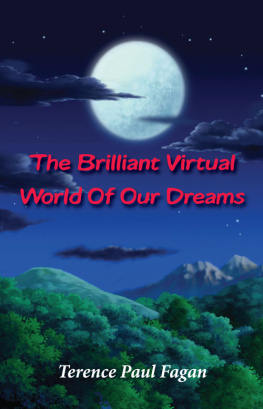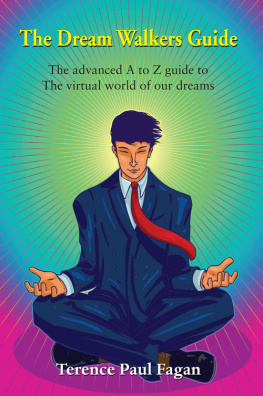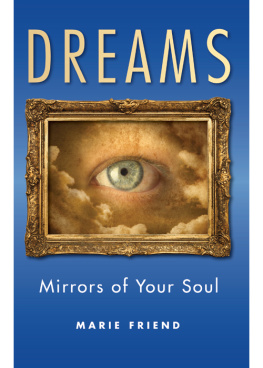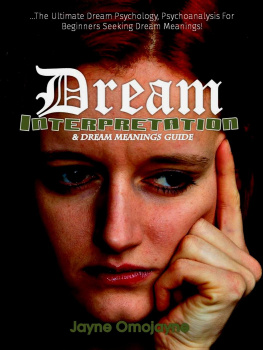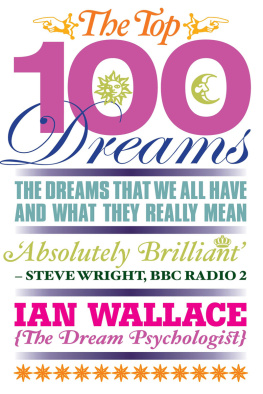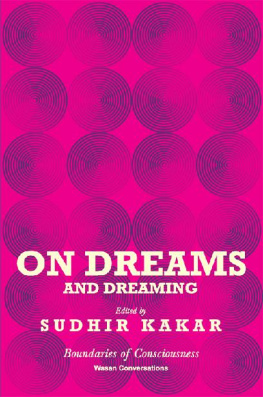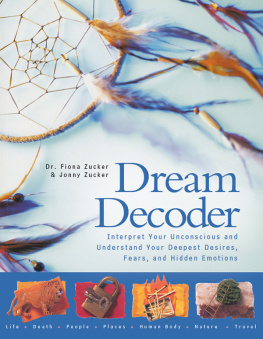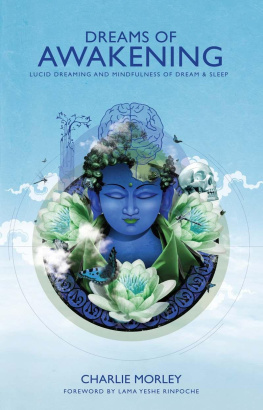
www.grosvenorhousepublishing.co.uk
Contents
Dedication
The book is dedicated to my beloved wife, Rowena
Gwen Fagan (nee: Arcan); whos love, encouragement
and unwavering support, gave me the strength and will
to undertake this journey into the Dream Virtual
World -and fulfil my own dream!
Introduction
Night has fallen, sleep has beckoned, and one begins to walk the brilliant Virtual World of our dreams! But what really are our dreams? Why do we dream? How are dreams created? How does a dream relate to the Real World, and to our brain? Are dreams an illusion? At the forefront of the current debate on dreaming is the quest to crack the enigma of dream consciousness: to understand what dream consciousness is at its most fundamental level. Solving this mystery is considered the holy grail of dream theory, and is the central theme of this book.
To explain:- I remember it was a lovely summers day, many years ago, and I was walking in the rose garden. The air was fresh and scented, and the birds were singing, as I took to hand a beautiful red rose. What did I see? A flower of red petals, a thorny stem, and a set of green leaves, of course! But I remember thinking at the time: what truly is it that I see? What puzzled me immensely, was that I had seen something very similar in my sleep dreams a few nights before. And even more puzzling, was that I could close my eyes now, and recreate at will in my visual imagination that same sort of image of the red rose that I had previously seen for real. What was the difference between the two sorts of vision, between the Real World image of the red rose I was seeing on that lovely summers day, and the subjective image of the red rose I previously saw in my sleep dream and could later recreate at will in my visual imagination?
And two more important questions:- Of what physically is the dream coloured image of the rose made? And how is this coloured image being created by our brain? The former has traditionally been one of the great mysteries about dreaming, to explain the physical stuff (called qualia) of which our dreams are made; and the latter seeks to establish how our brain creates or spins our dreams. The image of the red rose; a flower of red petals, a thorny stem, and green leaves; was clearly common to both types of vision, and is most likely to be made up physically of the same kind of thing, and to be created by the brain in the same kind of way. Is there a general theory of dreaming: uniting our visions of the Real World together with our sleep-dream visions and imaginings, and a fundamental physical explanation for these things, all into a single body of explanation?
Many seasons have come and gone in the rose garden since that wonderful and innocent summers day, many a beautiful rose has bloomed and faded away; many reclusive hours of the night spent pondering the puzzle which beset me so -all those years ago. But I understand now. I have answers which satisfy me: satisfy me at least to the extent that I now feel that I have gone some way towards solving the mystery of dream consciousness, achieved something close to a complete theory of dreaming, which I shall proffer to the reader as the Virtual World Theory of dreaming -or the VWT of consciousness. I have come to know, and what I have come to know about my own nights walking the dream virtual world, is that things are not quite as they appear to be, nor is our brains role in dream creation as physically timid or placid as it seems to be: indeed far from it!
What exactly is the connection between dreams and consciousness? Well, dreams literally are consciousness! More precisely, they are the object ~ observer/actor form or configuration which consciousness takes. When one is dreaming, one is conscious; and when one is conscious, one is also dreaming! To understand why the latter is true, one needs to realize that there is far more to dreaming than meets the sleeping night eye, that there are actually TWO main kinds of dreaming:- The familiar Resting Dream -such as the nocturnal sleep-dream, which functions to virtually represent our memory system in various ways; and the not so obvious Working Dream, which operates while we are awake, and which virtually represents our current interactions in the Real (external) World about us, such as a walk along the sea shore, or a walk in the rose garden, or a walk through the city streets. This Working Dream, is indeed our principal type of dreaming.
But cracking the enigma of dream consciousness is one thing, understanding what it means is another; and in that vital sense the quest (our quest) is not yet complete. Nevertheless the time has come to hand over that holy grail, in the provisional form of a radical new theory of dreaming (above), and a set of ten key Principles on the fundamental nature of dreams. Finally, I wish you the reader well on your walk of discovery into the brilliant Virtual World of your own dreams: may this book be of some help and guidance to you on that profound journey.
Terence. P. Fagan.
[1]
The brilliant Virtual World of our dreams
The Virtual World Theory of dreaming -or the VWT of consciousness, is a new theory of how the brain fundamentally works. It expresses the philosophical view, the new (or neo-Representationist) school of thought on dreams, that the brain raises a Virtual World, or Virtual dream, which primarily functions to represent the nervously-related energetic interaction between our own body (as observer/actor) and various objects in our local real or external world environment, for the purposes of guiding our behaviour in the Real World vis--vis those objects.
This opening chapter introduces the Virtual dream, and the philosophical Hard Problem of explaining what this brilliant Virtual World of our dreams actually is at its most fundamental level.
Entre: the philosophy of dreams.
What is dreaming? What is its purpose? How do our dreams relate to the real external world about us, to our memory system, and to our brain? Do dreams involve some kind of Illusion? This is the core subject matter of the philosophy of dreaming.
This book introduces the philosophy of dreams, from the latest perspective -the new (or neo-Representationist) school of thought on dreams. According to the new school, whenever we observe coloured objects (see a red rose for example), even when we are awake and are attending to the Real World, we are actually dreaming! Because contrary to appearances and our natural expectations here, the overwhelming evidence is that these coloured objects arent the Real (external) World objects themselves, nor are they the light such objects are sending to our retinal eyes; they are virtual objects, and occur in a brilliantly coloured dream Virtual World system being raised by our brain to represent those Real World objects -and the light they send to our eyes!
Remarkably, according to the new school, we effectively live our conscious life as the brains puppet in a dream Virtual World, walking through a dreamscape -observing virtual objects; falsely believing that dreamscape (and those virtual objects) to be the Real World itself; when in truth the dream Virtual World is a realm of supreme illusion being raised by our brain to represent or simulate our real body as it walks through the sunlit landscape of true external world reality!
So, does our brain really generate a brilliant Virtual World of consciousness, full of bright colours and flowing motions, to virtually guide our material body and its observer/actor interactions with objects in the real external world? Standard wisdom says no! Why? Because the brain as it is currently understood, is considered to be just a mass of little grey cells (neurons) interacting electrochemically along a plasma membrane network of nerve cell connections; and a dreamy Virtual World of consciousness, inclusive of a vivid display of colours, is not really the sort of thing to which the brain can be said to be party to, or be host to, or indeed which can be said literally applies to the brain. There is, however, according to the Standard wisdom, a Grand illusion that such a dreamy World of consciousness exists -as seems to occur when sleep dreaming! But the evidence, from sleep dreams themselves, and from a range of RVDs (Real World / Virtual World Differences), now overwhelmingly suggests that the brain does indeed create a virtual dream, extraordinary though this may seem. A Virtual World of consciousness complete even with a shooter -or dream walker; a puppet Virtual World observer/actor, the function of which is to guide our own material body and its interactions with the Real World! So, what is this brilliant Virtual World of our dreams -or of consciousness, and how is it being created?
Next page
